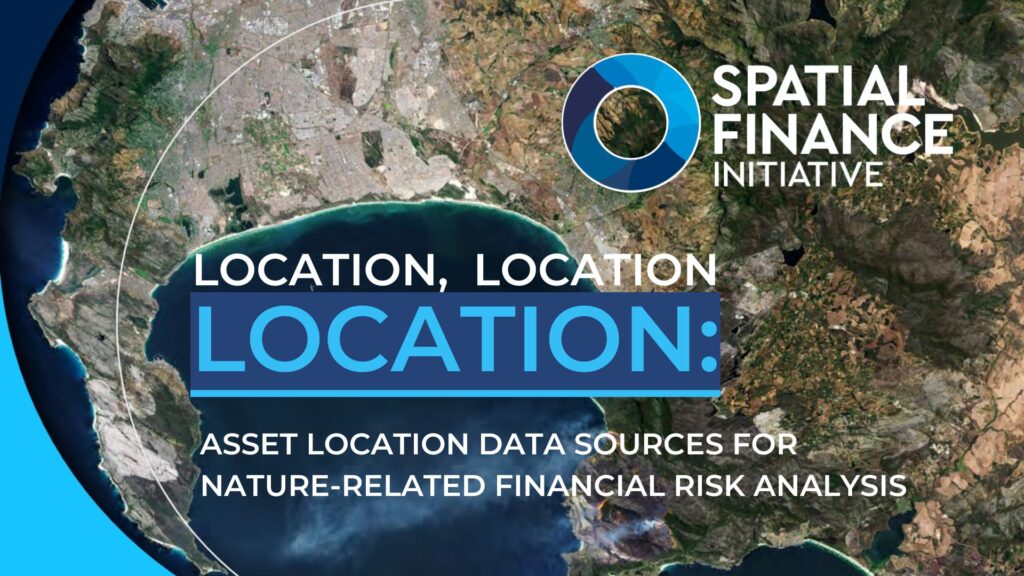The availability and state of nature and biodiversity, as well as the quality of ecosystem services, are inherently location specific. Financial institutions looking to assess nature-related financial risks, impacts and opportunities require location information of their counterparties. But this information is often perceived to be unavailable.
This report provides an overview of different sources of asset location data with examples across sectors and geographies. It assesses data availability for sectors with material nature risks, based on a review of open-source and commercial asset databases. The underlying inventory of 173 asset databases is available for download and includes the databases’ providers, coverage, asset count, asset characteristics and more.
Key takeaways
1.
Companies’ dependencies and impacts on nature are inherently location and context specific. Location data of counterparties’ operations is therefore critical for financial institutions to understand nature-related financial risks in a meaningful way.
2.
Location data is available through company disclosures and websites, public data registers or through commercial or non-profit data providers. But data availability and quality vary significantly between sectors and geographies.
3.
We created an inventory of 173 asset databases and have found good data availability for sectors such as mining and power, with the most significant data gaps for agriculture, forestry and fishing sectors. Overall, data gaps are more problematic for nature dependency analyses than for nature impact analyses, as many industries with medium or high dependencies have poor location data coverage.
4.
Many asset location datasets have not been created for financial risk applications. Limitations and challenges include accessibility of datasets, inconsistent formatting, poor ownership information and update frequency. Additionally, coverage of natural assets is very low.
5.
Overall, location data is more widely available than perceived but there are limitations on the usability of existing datasets. These could be addressed in the short term by the finance sector advocating for a principle of asset-level disclosure, the public sector opening up data collected for (environmental) regulatory purposes and the research community developing efficient methodologies for cleaning and standardising existing data points.



